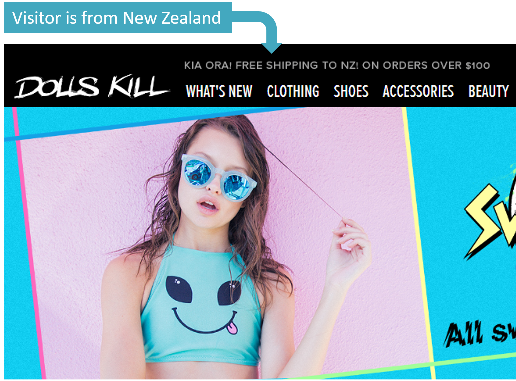Popups – you either love them or hate them. But no one can deny how essential they are to eCommerce businesses. When used correctly, popups can give companies the conversions they need.
Understanding PopUps
While a lot of people find popups annoying and blame them for disrupting their website visits, successful bloggers, top SaaS companies, global online publications, and premiere eCommerce brands all utilize popups.
The reason is simple – popups work really well. And one reason why they are so effective is due to today’s typical consumer attitude. Most consumers have short attention spans, minimal brand loyalty, and are often looking for products that give the utmost value. Popups can engage people in a compelling manner through visible call-to-action and incentives.
The SkinnyMe Tea company is a prime example of the power of popups. The Australian-based business came up with an email popup that gave shoppers a promo code for a 10% discount, provided said shoppers subscribed to their newsletter. These customers clearly saw the value in the offer and email sign-ups increased by 758%. Aside from the padded email list, the company also saw a 50% rise in conversions for the duration of the campaign.

5 Ways to Use PopUps to Boost Conversion
Many other eCommerce businesses were also able to use popups successfully by thinking outside the box. Here are five ways to use this type of advertising to boost conversion rates and sales.
-
Offer Something Extra With Your Welcome Popup
It’s vital for eCommerce businesses to try and convert new visitors to either social followers or email subscribers. Even if the visitor doesn’t end up buying initially, the odds become better if you can get them to return, either with a newsletter or some form of social media interaction.
One way to do this would be to have a well-designed popup that asks them to like the company’s social profile or to submit their email address. Once done, the visitor will be rewarded with a promo code for a substantial discount.
-
Reduce Cart Abandonment Rates With a Catchy Exit Popup
Cart abandonment slows revenue down and hinders conversion rates. But exit-intent popups can do a lot in deflecting customers from their intention of leaving the page without finishing their order.

It’s a good bet that most of your customers are interested in buying but are wary of clicking that final button because of the price. This could also cause prospective clients to check out the competition. If you want to prevent lost sales from these customers, try enforcing exit-intent offers that blatantly interrupt their leaving. Maybe you can prevent them from leaving prematurely by offering special discounts or giving away a free product if they continue with their purchase.
-
Use Specially Triggered Popups to Upsell or Cross-Sell Products
Amazon is a prime example of how beneficial upselling or cross-selling is to online retailers, and this technique could be enhanced further with the use of popups. You can design ones that are triggered when a customer searches for a particular product. For instance, a customer shopping for new Levi’s might encounter a popup suggesting boots that look good with that style of denim.
You can make it even better by offering discounts for the cross-sell or upsell product. This gives the customer an incentive to buy another product that would go well with the item that they’re already purchasing. This is an inspired way to boost sales, as selling to current customers is easier than trying to convince new customers to buy something.
-
Subtly Push Customers into Action with Time-Sensitive Popups
Another useful strategy is to create time-sensitive popups that will give customers a push into taking immediate action. For instance, a company can implement a popup that offers a $10 discount and free shipping if the customer can complete their order at a certain time. Aside from providing a sense of urgency, it also gives the customer an incentive to complete the checkout process.
-
Use Popups to Inform Customers of Shipping Policies
Shipping is one of the main concerns of online shoppers. Unfortunately, customers are not in the habit of scrolling to the end of the page just to check out the company’s shipping policies. So if you’re shipping to their location, it’s best to use a popup to let the customer know that in advance. Auto geolocation technology can be used to detect and identify the customer’s IP address. Once that data has been ascertained, a popup can be triggered that informs the client of their shipping options.

Don’t drive your customers away with run-of-the-mill popups. Find creative ways to harness the power of these little windows and use them to enhance conversion rates and boost sales.


















